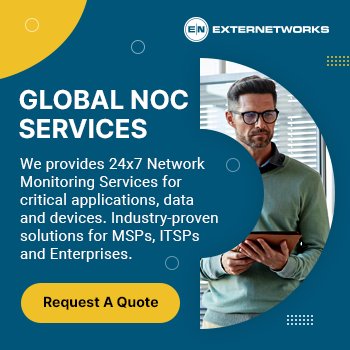Most Important KPIs For Managed Service Providers

Looking for an MSP for your IT support? You’ll want to understand managed services Key Performance Indicators or KPIs, and how they enhance selecting an IT partner.
What are Managed Service Provider Metrics?
Managed Service Provider Metrics (MSPs) are used to measure the performance of MSPs. The main purpose of these metrics is to provide information for MSPs to understand how they perform against other MSPs. These metrics include revenue per client, number of clients served, average monthly recurring revenue, etc.
Why do Managed Service Providers use KPIs?
Like all good providers of a service, MSPs need to know how well they are performing in relation to both themselves and their peers. That’s how service providers track their service offerings to both improve their offerings and stay competitive.
An MSP makes a significant investment in people, processes, and systems. Therefore, it needs to effectively measure how to properly use these assets along with critical metrics of customer satisfaction. When we define critical metrics in terms of goals or predetermined company targets, we consider these metrics Key Performance Indicators. So, a good MSP will carefully set and monitor KPIs on customer satisfaction as one example. KPIs move the organization forward to improve its service offerings while improving both employee and client satisfaction.
Types of KPIs
The MSP industry uses at-least two-dozen. IT support metrics (sometimes more). That’s a lot of data to collect, analyze and report. What to do with all of that time invested and data/reports generated? We do not consider all of the metrics MSPs measure as KPIs – per the above paragraph. Almost 24 metrics are just too much in that the company cannot realistically try to improve two dozen things simultaneously!
KPIs fall under the areas of:
Customer Satisfaction/Quality
- Net Promoter Score (NPS) – the result of surveying clients. Normally the NPS is a response to a customer satisfaction question on a ten-point scale. Clients answering a 9 or 10 are most likely to recommend and refer their MSP’s services.
- Churn Rate – to borrow a term from the wireless industry, what percent of the client-base leaves/does not renew their subscription services over time? This is a good measure of customer satisfaction especially for an MSP’s subscription-based services
- First Contact Resolution Rate (FCRR) – What percent of issues does the MSP’s Help Desk or Tech Support resolve on the first call/contact with the customer? The FCRR is one of the most critical elements of both a high customer satisfaction rate and cost control for the MSP. Additionally, FCCR rates as the single largest component of customer satisfaction.
- First Level Resolution Rate (FLRR) – a measure of resolution of the issue on the first-level of support contacted within the MSP. Each time a level of support escalates a trouble ticket to the next higher level of support, the total cost to resolve the incident increases. For example, if Tier 1 support escalates and transfers a support call in 2 minutes, it may look like Tier 1 has done a great job in keeping costs down via a very quick call. However, as the support incidents escalate to more expansive support tiers, the total cost for the issue resolution increases.
Ensuring Business Continuity
- Infrastructure Stability – A highly stable IT infrastructure offers the MSP client organization both minimal outages and service disruptions.
- Lost business hours for the client – measures times in both incident frequency and length of downtime
Delivering Services on-time and within Budget
- Service Level Agreement (SLA) compliance rate – What percentage of the time does the MSP miss their SLAs? Prior to setting up the service contract-SLA, both MSP and client must negotiate obtainable service levels with non-compliance penalties clearly spelled out. The Managed IT service team must thoroughly understand the client’s business and the risks of outages, etc. on the client’s business.
- Mean-Time To Resolve (MTTR) – a service-level metric which measures the total time from ticket opening until ticket closure. MTTR will also have a strong effect on customer satisfaction. However, First Contact Resolution Rate has a stronger cause-and-effect relationship on customer satisfaction than MTTR.
- Technician Utilization Rate – This KPI measures both costs and how effectively the support organization uses technicians. Technician Utilization is also a measure to use for staffing the current and future needs of the support organization. The amount of time technicians work on resolving a ticket is a highly important cost measure. Further, the largest percentage of support cost is normally labor, But, your MSP must strike a healthy balance; at a lower technician utilization, the cost per ticket will be very high. If the MSP ramps up technician utilization, the support cost per technician will go down. However, technicians may experience burnout. Thus, the MSP may experience more support staff turnover at a higher technician utilization rate, thus raising support costs.
MSP Finances – a financially stable MSP is a benefit for you as a client!
- Recurring Revenue Rate (R3) – the value from subscription support services and renewals
- Cost per Ticket – While MSPs need to keep this number on budget, the higher the spend per ticket normally correlates with increased customer satisfaction. One of the keys to managing cost per ticket is resolving the ticket as soon as practical and avoiding unnecessary support-tier escalation. Finally, cost-per-ticket is a great indicator of service efficiency.
- Average Revenue Per User (ARPU) -again, borrowing a similar measure from the wireless industry. ARPU is the total revenue derived from subscription-based services divided by the amount of subscription-based clients.
- Client Contribution (CC) – the revenue generated from each client/subscriber, including the cost of providing the specific services to each client.
What is a Service Desk Metrics?
A Service Desk Metrics is a set of measurements used to measure the performance of a service desk. The goal of these metrics is to help IT managers understand how well they are performing their jobs. These metrics include things like tickets closed per hour, average resolution time for each ticket, etc.
Difference between service desk metrics and key performance indicators
Service Desk Metrics include things like how long it takes for a ticket to be resolved, what percentage of tickets were closed, and how much money was spent resolving each issue. Key Performance Indicators (KPI’s) measure the effectiveness of a company’s business processes. KPIs help managers understand whether they are meeting their goals and objectives. They also allow them to identify areas where improvement is needed.
Most Important and Actionable KPIs
I’ve just reviewed thirteen managed services Key Performance Indicators. That’s still a large number of KPIs for an MSP to try to improve all at one time. Let’s focus in on some of the top KPIs that a good MSP will focus on.
- Cost-per-ticket – This KPI sums ups the efficiency of the entire service operation. Cost-per-ticket divides the number of tickets per month into the total monthly costs of an MSP’s service/support group. The monthly costs include salaries for all of the technicians, software, systems, rent, etc. So, this one number sums up the entire IT support operation’s efficiency.
- First Contact Resolution Rate (FCRR) – this KPI is the largest component of customer satisfaction. Improving this one measure offers the greatest possibility of improving customer satisfaction. The FCRR increases by investing in training, and expanding the support department’s knowledge base to enable more technicians to properly resolve tickets on the first contact.
- First Level Resolution Rate (FLRR) – A strong indicator of the cost of the entire support operation. As mentioned above, FLRR takes the cost of all support tiers into account to understand the true support costs for all tickets regardless of what level of support actually resolves the tickets.
- Mean Time to Resolve (MTTR) – As mentioned above, MTTR has a strong effect on Customer Satisfaction though not as strong as FCRR.
- Technician Utilization – Per above, technical support is primarily serviced-based, and the technicians doing the troubleshooting-resolution are the primary cost of resolving tickets. MSP’s need to balance their technician utilization rate against technician turnover.
Conclusion: What to do with the KPIs?
Managed Service Provider metrics and associated measures help MSPs compare themselves to their peers. Key performance indicators (KPIs) can play a strong role in continuous business improvement and help with budget decisions for growth and customer satisfaction optimization. MSPs can measure, manage, and improve their business with KPIs! Bottom line for your support needs – look for an MSP that runs an efficient business. Want to learn more about how MSPs keep your business profitable?
Contact ExterNetworks today to learn more about how we can provide your IT Support needs.





